Every tenth person on the planet complains of neck pain.After lower back problems, it is the second most common reason for patients to see an orthopedic doctor.Restriction of daily activities and professional activities, physical and emotional discomfort, reduced quality of life - this is what people suffering from cervical spine disease have to face.Therefore, you should pay attention to all signs of pathology and, in order to prevent it from progressing, consult a doctor in time.
Reasons
The origin of neck pain is quite varied.In this area there are bony structures (spine), soft tissues (muscles, tendons, ligaments), nerves and blood vessels.They are subject to mechanical, inflammatory, metabolic and dystrophic changes.In this case, other nearby areas are often affected: the head, shoulders and chest.Neck pain will be a kind of marker of the following pathologies:
- Osteochondrosis.
- Intervertebral hernia.
- Spondyloarthrosis.
- Spondylitis.
- Myositis.
Most of these conditions develop with constant stress on the spine.The neck is the most mobile part that is exposed to external factors.Uncomfortable posture, sedentary work, constant muscle tension, hypothermia and stress become common factors of modern life that contribute to the development of diseases.
Neck pain is not only local, but also referred.They often spread to this area due to shoulder pathology, which includes:
- Arthritis.
- Osteoarthritis.
- Humeroscapular periarthritis.
- Brachial plexitis.
In addition, any part of the skeleton suffers injuries, which cannot be called a rare case.Given these characteristics, a careful differential diagnosis should be carried out to identify the cause of the pain syndrome.And this is possible only after a medical examination and further research.
If you are concerned about neck and shoulder pain, the first thing you should do is see a professional.All therapeutic measures follow diagnostic measures.
Symptoms
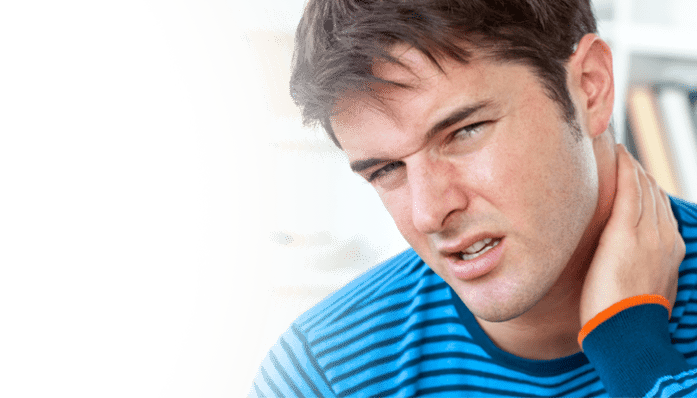
Every disease has its own symptoms.Neck pain is the most obvious sign of spinal pathology, which is difficult not to pay attention to.According to medical terminology, such a symptom is called cervicalgia.And the spread of pain to the shoulder gets a new name - cervicobrachialgia.This is due to the common innervation and blood supply of these areas.
The characteristics of neck pain depend on the severity and extent of the process, as well as the subjective feelings of the patient himself.As a general rule, these are:
- Sharp or dull.
- Shooting, stabbing, aching, pulling.
- Single or double sided.
- Weak, medium or strong.
- Paroxysmal or constant.
- Appears when moving the head, arms or in a state of rest.
In addition to neck pain, there are other symptoms that make it possible to determine the source of pathological impulses.This requires their detailed analysis, which is carried out as part of a clinical trial.
Spinal diseases
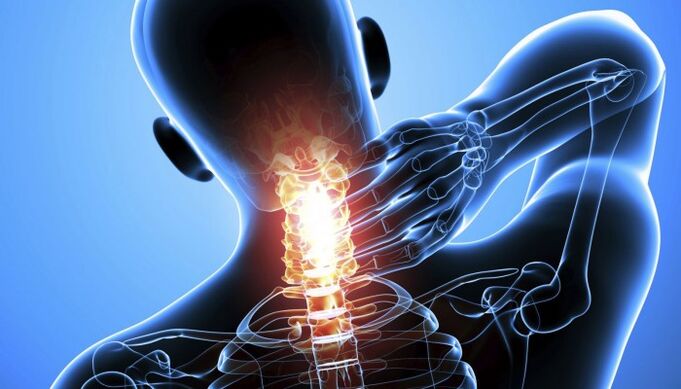
Among the causes of pain in the neck region, pathology of the spine is the first.Many patients have osteochondrosis and disc herniation;they often have to deal with spondyloarthritis of the immune system;infectious spondylitis is somewhat less common.Neck pain can be caused by muscle spasm or nerve root compression (radiculopathy).In the latter case, it is accompanied by nervous disorders, which are manifested by the following symptoms:
- Numbness, crawling, burning, tingling.
- Decreased sensitivity in the neck, shoulders and arms.
- Revitalization or suppression of tendon reflexes.
- Muscle weakness.
- Paleness, "marbling" of the skin.
The neck muscles are reflexively tense and can be felt in the form of dense ribs on the sides of the spine.Head movement is severely restricted.It is often accompanied by a throbbing or throbbing headache.If the spinal cord is involved in the pathological process, conduction disturbances develop in the form of paresis of the upper and lower limbs.
In addition to neck pain, the pathology of the spinal column can become a source of very serious problems, which can lead to loss of work ability.
Myositis
When the neck muscles ache, myositis is likely to develop.It appears as a result of prolonged stress, hypothermia or infection.The pain is usually aching and does not spread to other areas.The range of motion is limited, local inflammatory symptoms appear: swelling, redness, increased local temperature.The course of myositis is not serious, the disease is rarely accompanied by complications.
Plexiglas

Pain may occur due to inflammation of the nerve plexuses in the neck and shoulder area.They are formed by the anterior branches of the spinal roots and are responsible for the innervation of the skin and muscles as well as the diaphragm in the appropriate areas.Cervical plexitis is accompanied by the following symptoms:
- Acute paroxysmal pain in the neck.
- Weakness of the paraspinal muscles.
- Hiccups.
- Shortness of breath.
Damage to the brachial plexus is accompanied by motor, sensory and autonomic disorders of the upper limb: weakness, reduced superficial and deep sensations, pallor.
Pain in the neck and shoulders can be a sign of inflammation of the nerve plexus - plexitis.It must be distinguished from vertebrogenic causes.
Arthritis
Arthritis of the shoulder joint is accompanied by pain.Inflammation can be immune, metabolic or post-traumatic in nature.The following symptoms appear:
- Swelling of the shoulder.
- Skin redness on it.
- An increase in local temperature.
- Limitation of movements in the joint.
Damage to the shoulder can be isolated or part of the structure of polyarthritis in connective tissue diseases and gout.If the treatment is not timely, prerequisites are created for the development of arthrosis changes in the joints.
Osteoarthritis
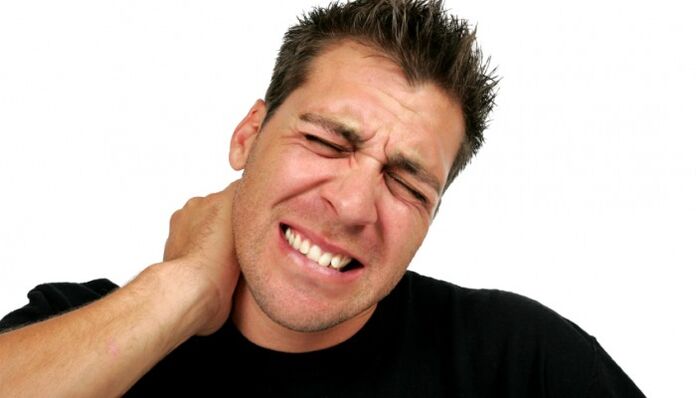
Shoulder pain is often a manifestation of arthrosis.This pathology is degenerative and dystrophic in nature, affecting all components of the joint and primarily the cartilage tissue.It is characterized by slow but steady development.The development of osteoarthritis is accompanied by the following symptoms:
- Crackling in the neck, friction, clicking in the joint.
- "Starting" and "mechanical" pain (appears at the beginning of the load), which then becomes permanent.
- Deformity of the shoulder.
- Restriction of movements.
The disease causes significant suffering to patients, reduces their physical activity and prevents them from carrying out their usual activities.
Humeroscapular periarthritis
This disease develops as a result of inflammation of the periarticular tissues and the shoulder joint.Periarthritis is often the result of injury or overuse.It is accompanied by the following symptoms:
- Sudden pain in the shoulder, radiating to the neck and arm, worse at night.
- Sharp restrictions on mobility, especially abduction and raising the arm.
- Forced position of the limb: bent at the elbow and pressed to the body.
- Swelling along the front surface of the joint and on the side.
Humeral periarthritis is often confused with arthritis or arthrosis, but it differs from these diseases in that there are no pathological changes in the joint itself.
Diagnostics
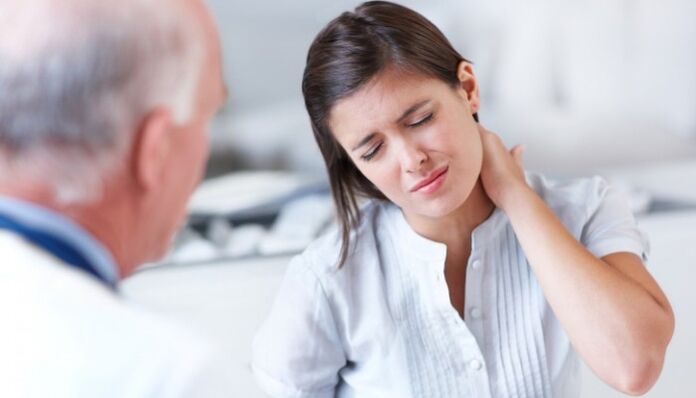
To identify the causes of neck and shoulder pain, a comprehensive examination of the patient should be carried out, including additional methods.With the help of laboratory and instrumental tests, it is possible to determine the metabolic and structural disorders of the body.Depending on the clinical situation, the following procedures may be required:
- General blood and urine analysis.
- Blood biochemistry (inflammation indicators, rheumatic tests, uric acid, calcium).
- X-ray of the spine and shoulder joint.
- Magnetic resonance (computed) tomography.
- Neuromyography.
- Arthroscopy.
Pain radiating to the left shoulder and arm must be distinguished from heart pathology, so electrocardiography must be added to the above examinations.It is impossible without consulting specialists: neurologist, vertebrologist, traumatologist, rheumatologist.
The origin of the pain is determined based on the results of a comprehensive examination.Once the diagnosis is made, treatment measures can begin.
Treatment
To treat neck pain, you need to know the mechanisms and causes of its development.If they are clearly defined, a therapeutic program is created for the patient.The treatment includes methods of multidirectional effects on the musculoskeletal system, which make it possible to eliminate inflammatory changes, stop dystrophic processes, relieve pain and muscle spasms.First, you need to minimize the load on the neck and shoulder girdle to relieve the affected areas.It may be necessary to wear a Shantz collar.
Drug therapy
Treatment of neck pain necessarily includes drug correction.Modern medicine has a wide arsenal of drugs to help patients with musculoskeletal problems.The most commonly prescribed medications are:
- Nonsteroidal anti-inflammatory drugs.
- Muscle relaxants.
- Chondroprotectors.
- B vitamins.
- It's worth it.
In case of neck pain that does not respond well to such treatment, paravertebral blockades with novocaine or intra-articular administration of hormonal agents are used.After eliminating acute symptoms, you can use local forms - ointment, gel, patch.
It is almost impossible to effectively treat the pathology of the skeletal system, which causes pain in the neck and shoulder joints, without drugs.
Physiotherapy
Comprehensive treatment of pain in the neck region includes physical methods.With their help, you can eliminate inflammatory phenomena and improve the biochemical processes of tissues.In the case of pathologies of the neck and shoulder joints, the following procedures can be used:
- Physiotherapy.
- Laser treatment.
- Wave therapy.
- Magnetotherapy.
- Paraffin and mud therapy.
- Reflexology.
- Balneotherapy.
The optimal procedures are prescribed by the physiotherapist, taking into account the characteristics of the disease and the characteristics of the patient's body.
Therapeutic practice

Physiotherapy exercises have a good effect on neck pain.An individual gymnastics complex is developed for each patient, which helps in the treatment of the pathology: it forms strong muscle ligaments, gives elasticity and strength to the ligaments, and restores the range of motion of the spine and joints.
Postisometric relaxation exercises are suitable for the neck, where static tension is replaced by relaxation.The engine mode should be gradually expanded, sharp turns and bends, as well as active rotation of the head, should be avoided.
The regular performance of therapeutic exercises not only restores the movement of the affected parts of the skeleton, but also improves the general condition of the patients.
Massage and manual therapy
Methods of manual stimulation of the musculoskeletal system help in the treatment of pain in the neck muscles.Massage is not only useful, but also pleasant.At the same time, the blood supply to the soft tissues improves, the muscles relax, which promotes the activation of tissue recovery processes.During manual therapy, functional blocks and subluxations of the neck region are eliminated, the spine is lengthened, which leads to decompression of the nerve roots.
Operation
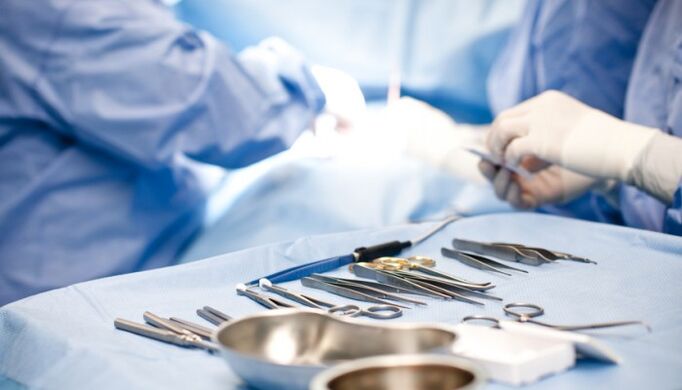
Radical treatment of neck pain is necessary if conservative measures are ineffective.Most often, the operation is performed for severe hernias and osteochondrosis.Abnormal disc protrusions, osteophytes, and vertebral displacements are removed endoscopically, and signs of instability are eliminated.Due to severe osteoarthritis, prosthetics can be performed in the shoulder joint, and contractures can be corrected.After the operation, rehabilitation is required, which depends on the extent of the operation.
Neck and shoulder pain bothers many patients.In order to get rid of discomfort and possible consequences, it is necessary to immediately diagnose and treat the pathology of the skeleton.























